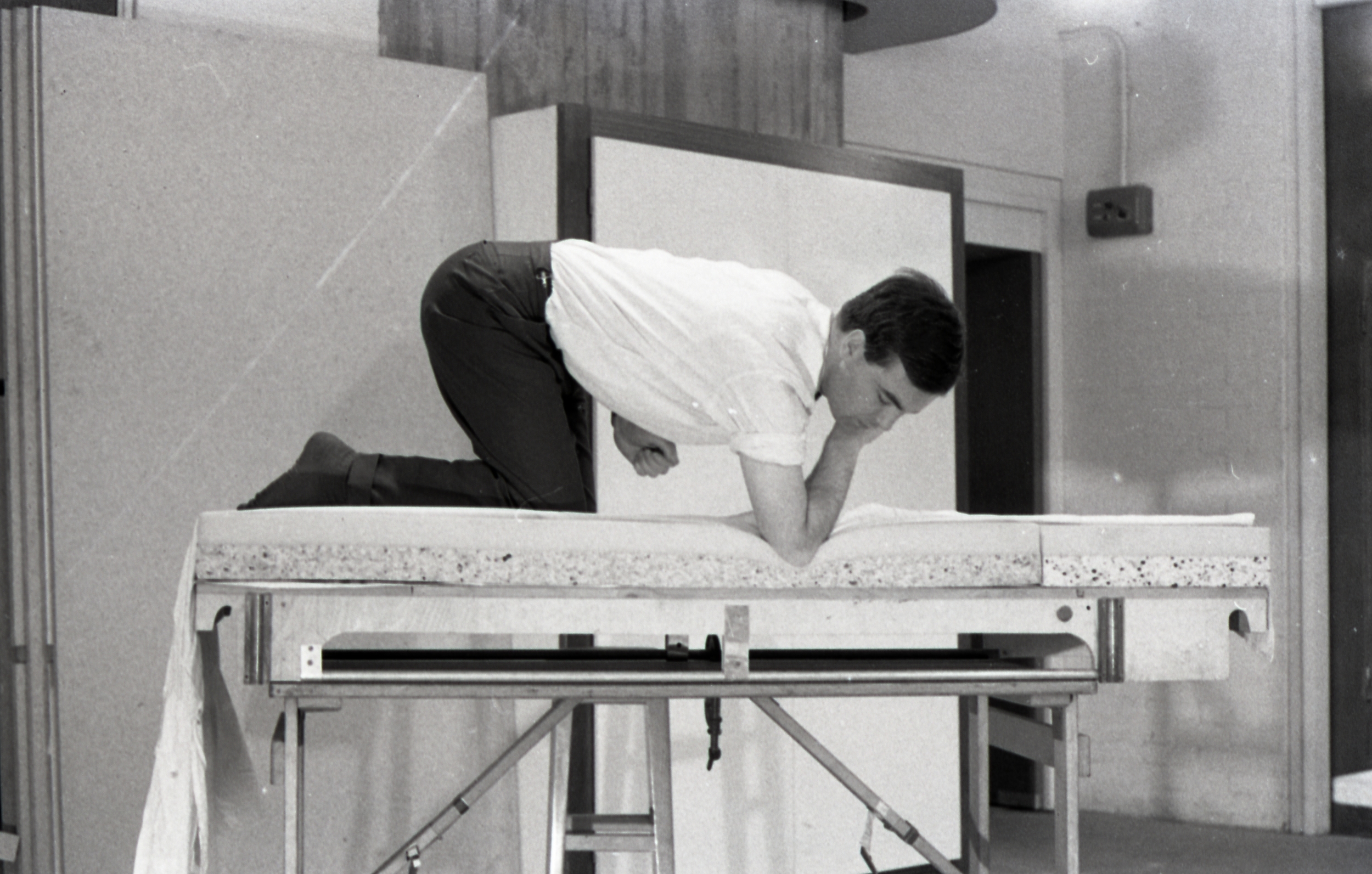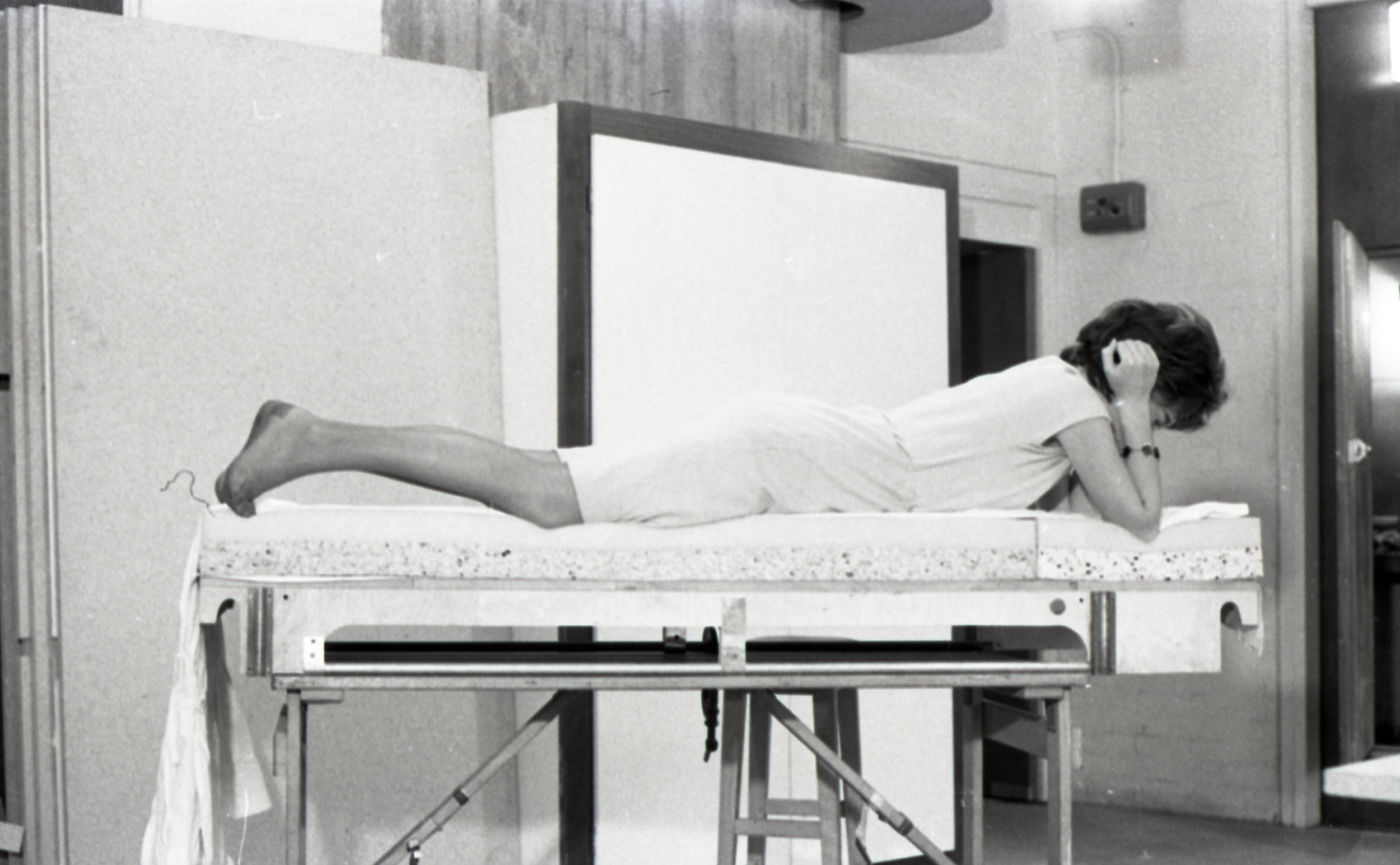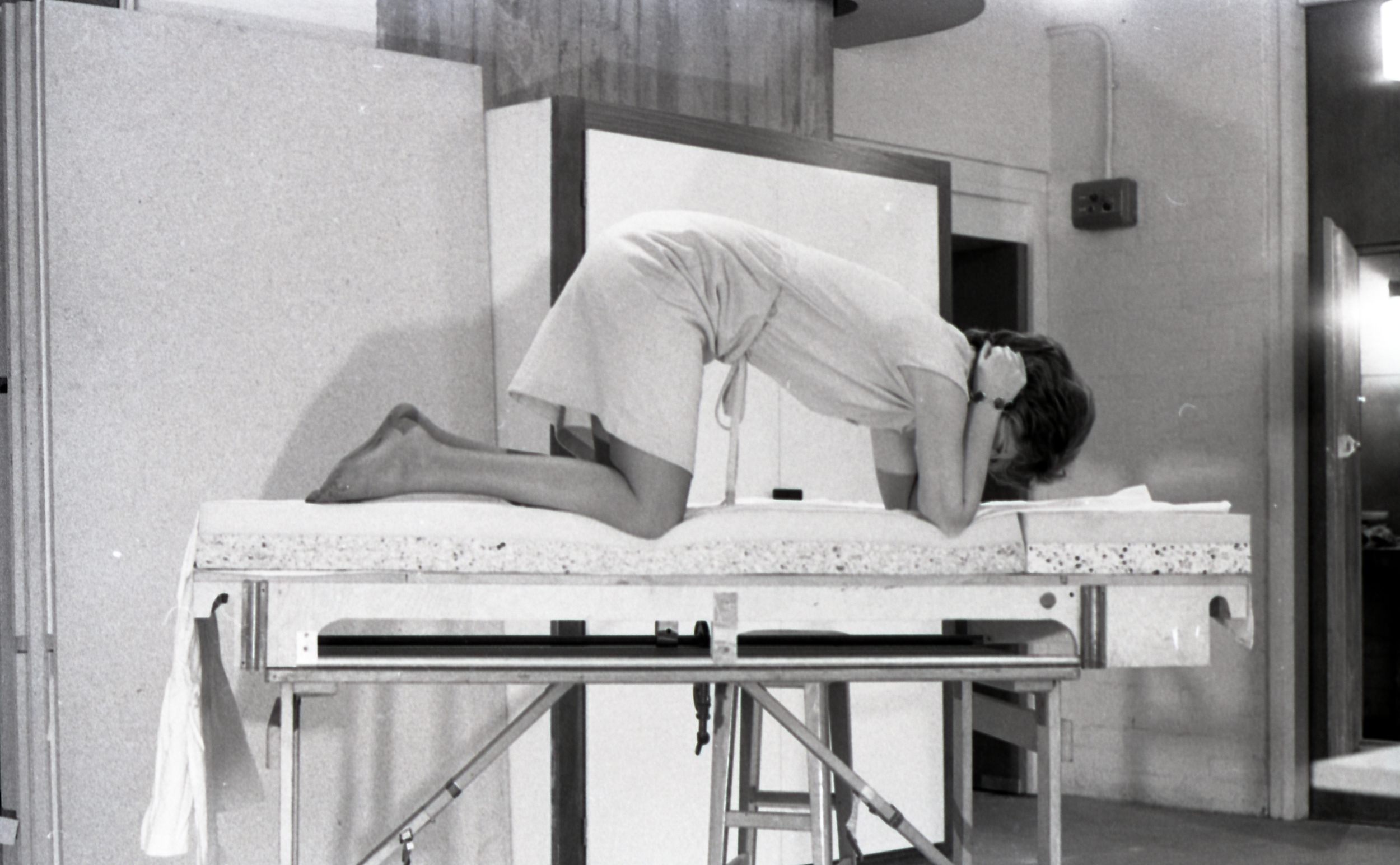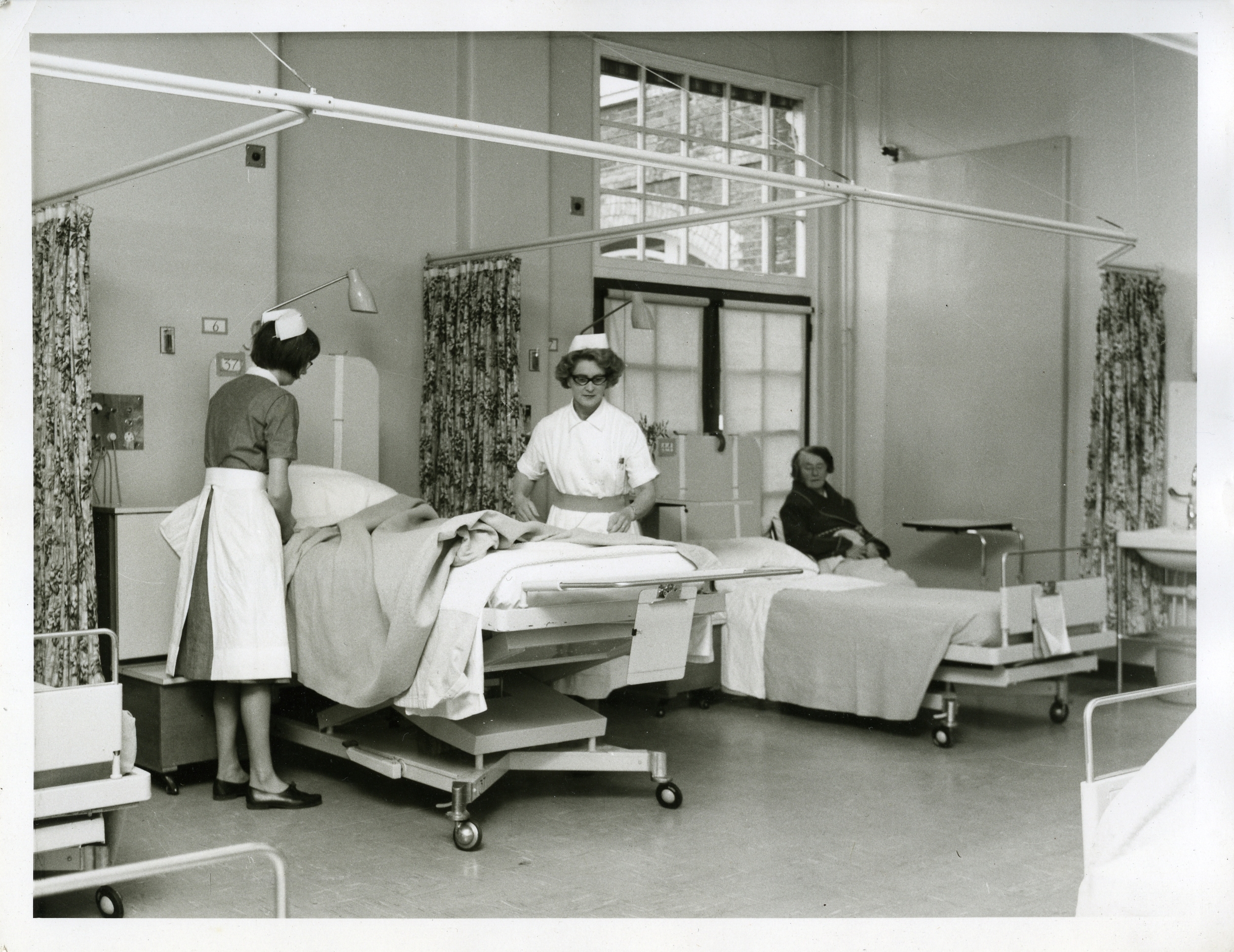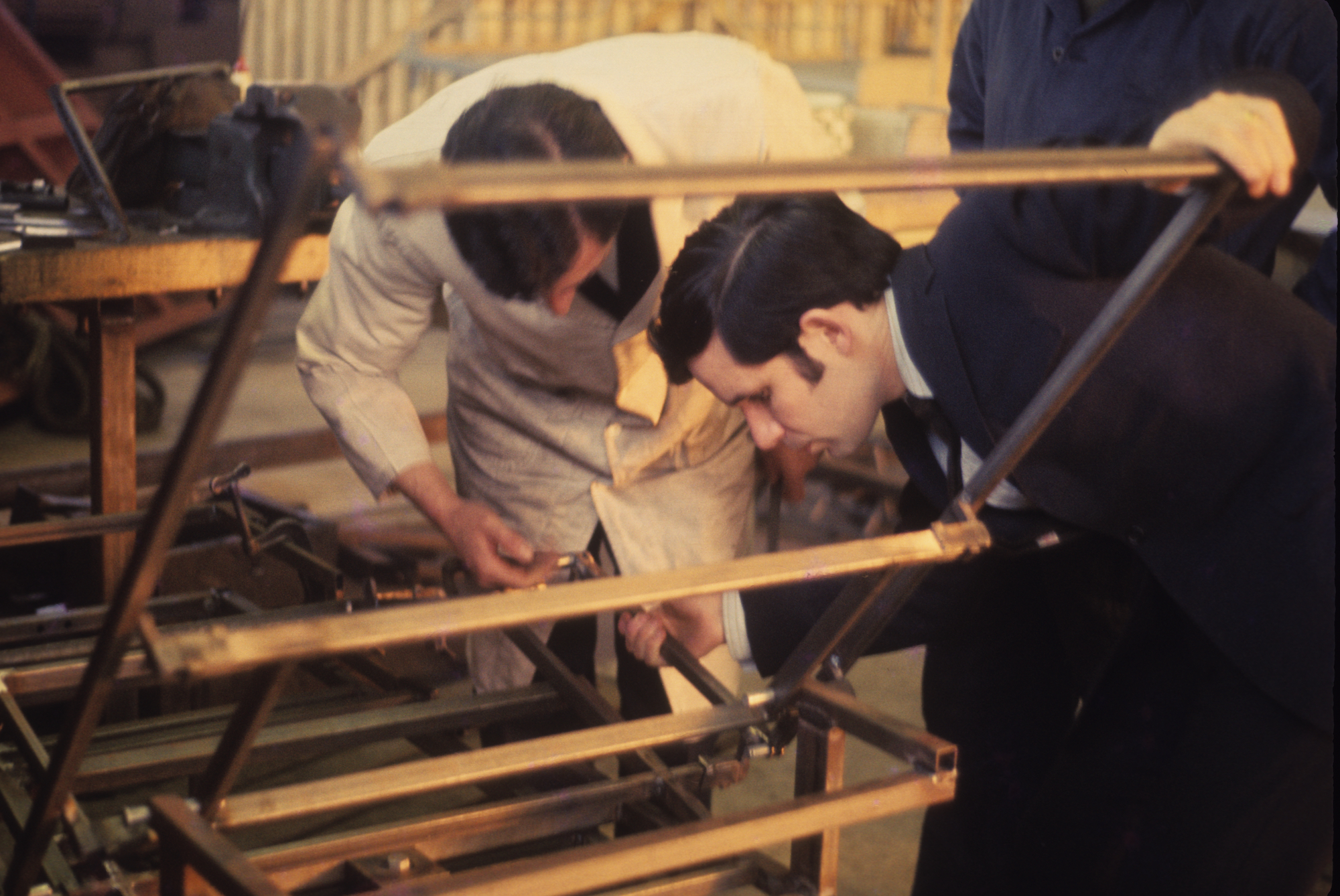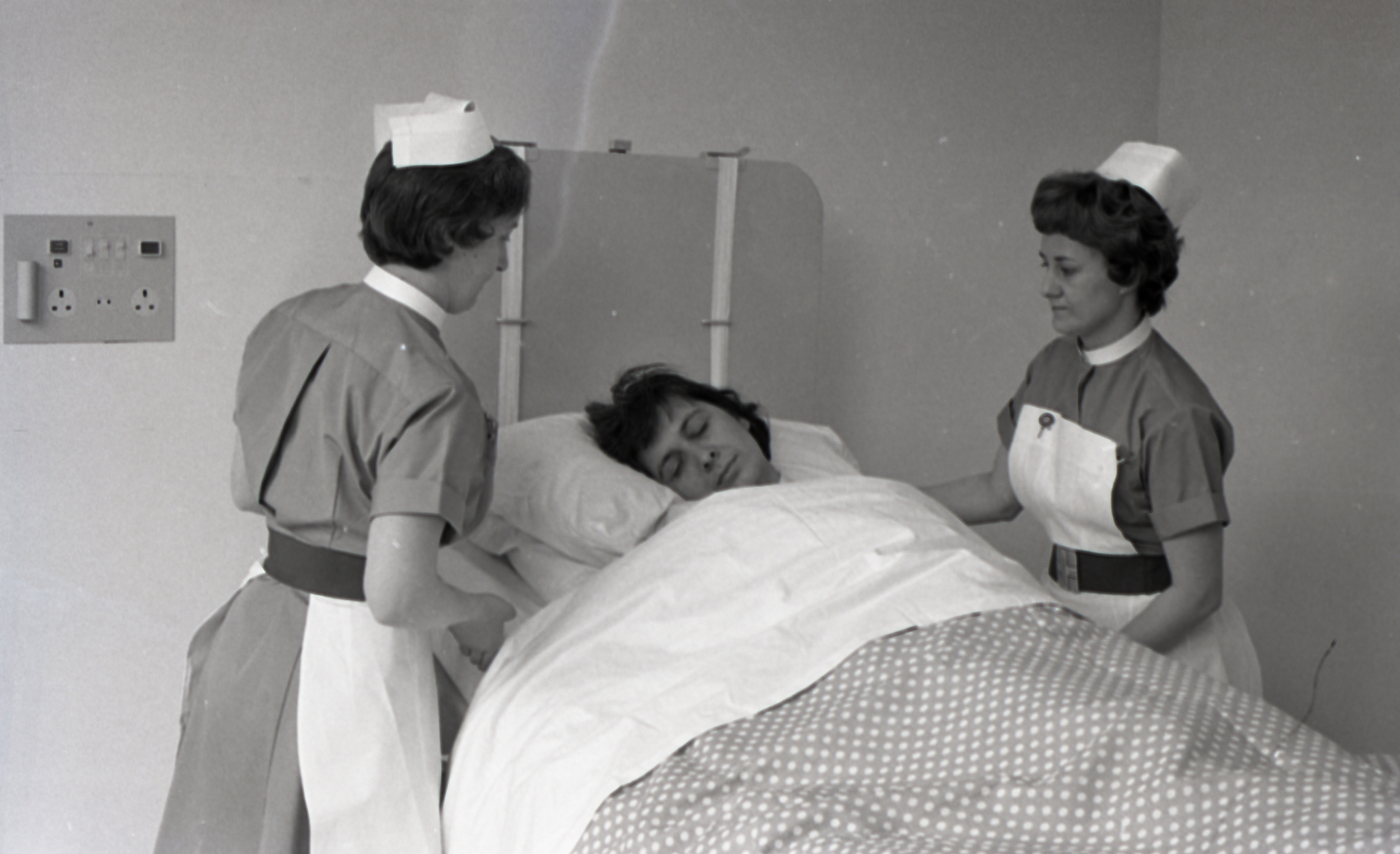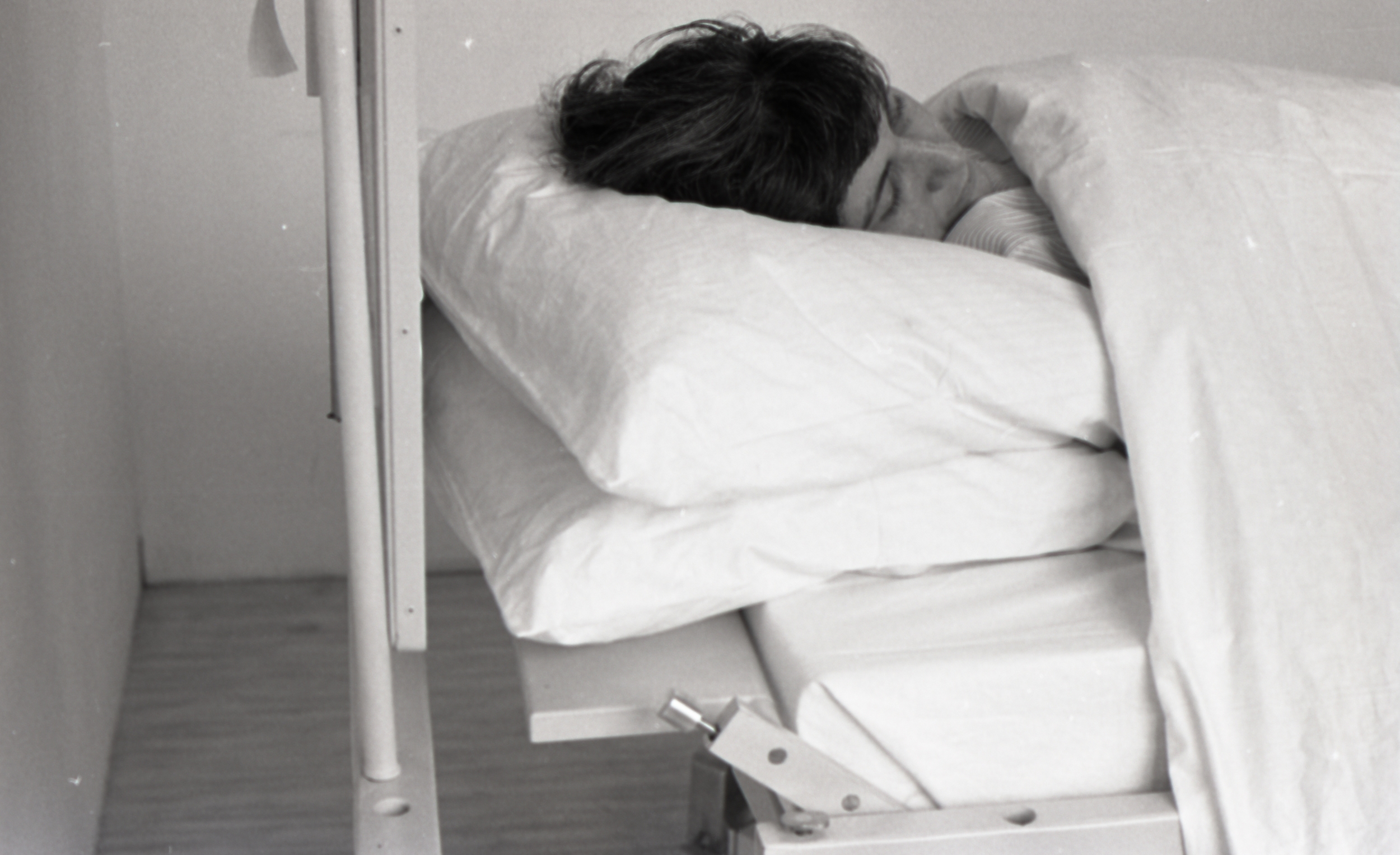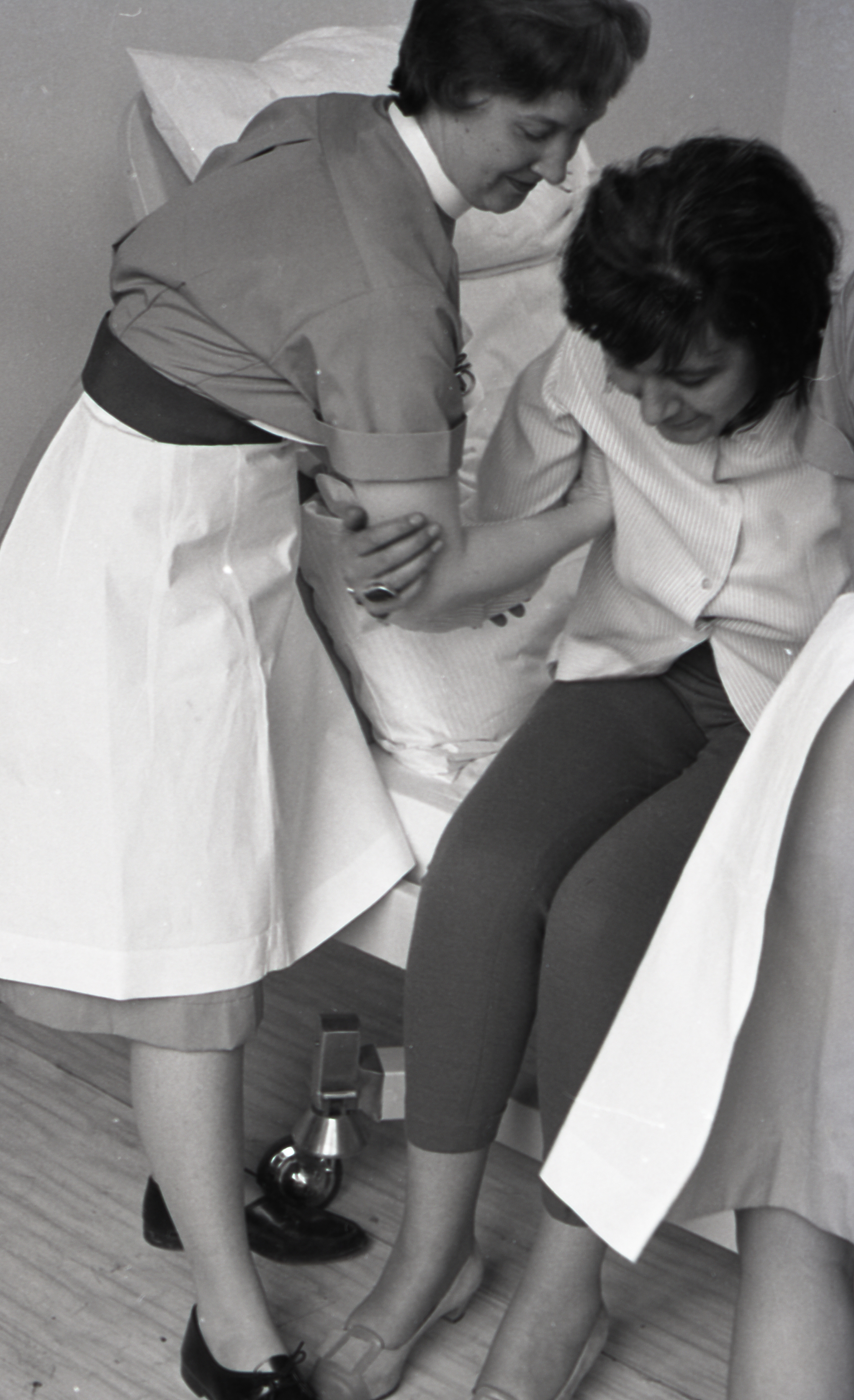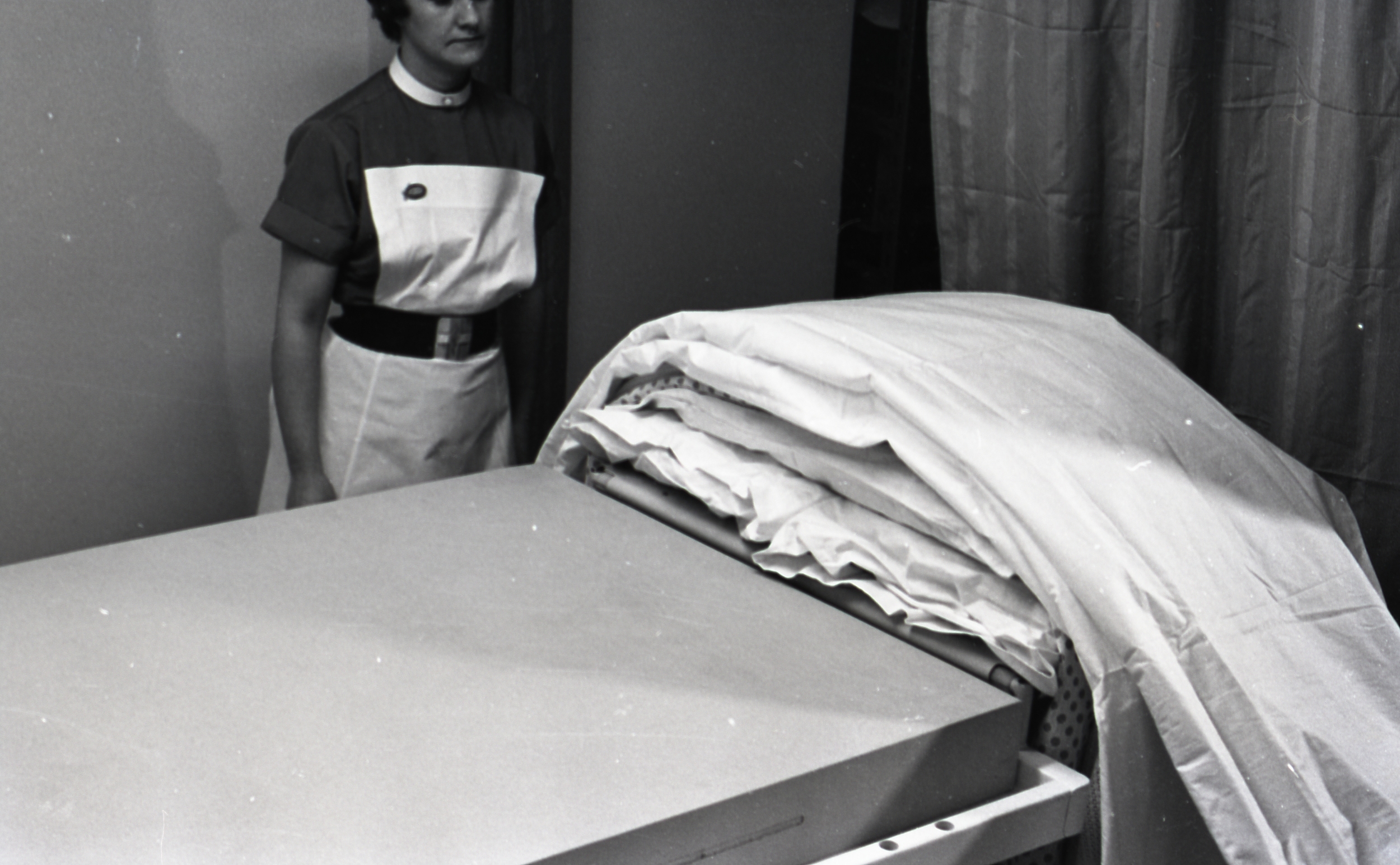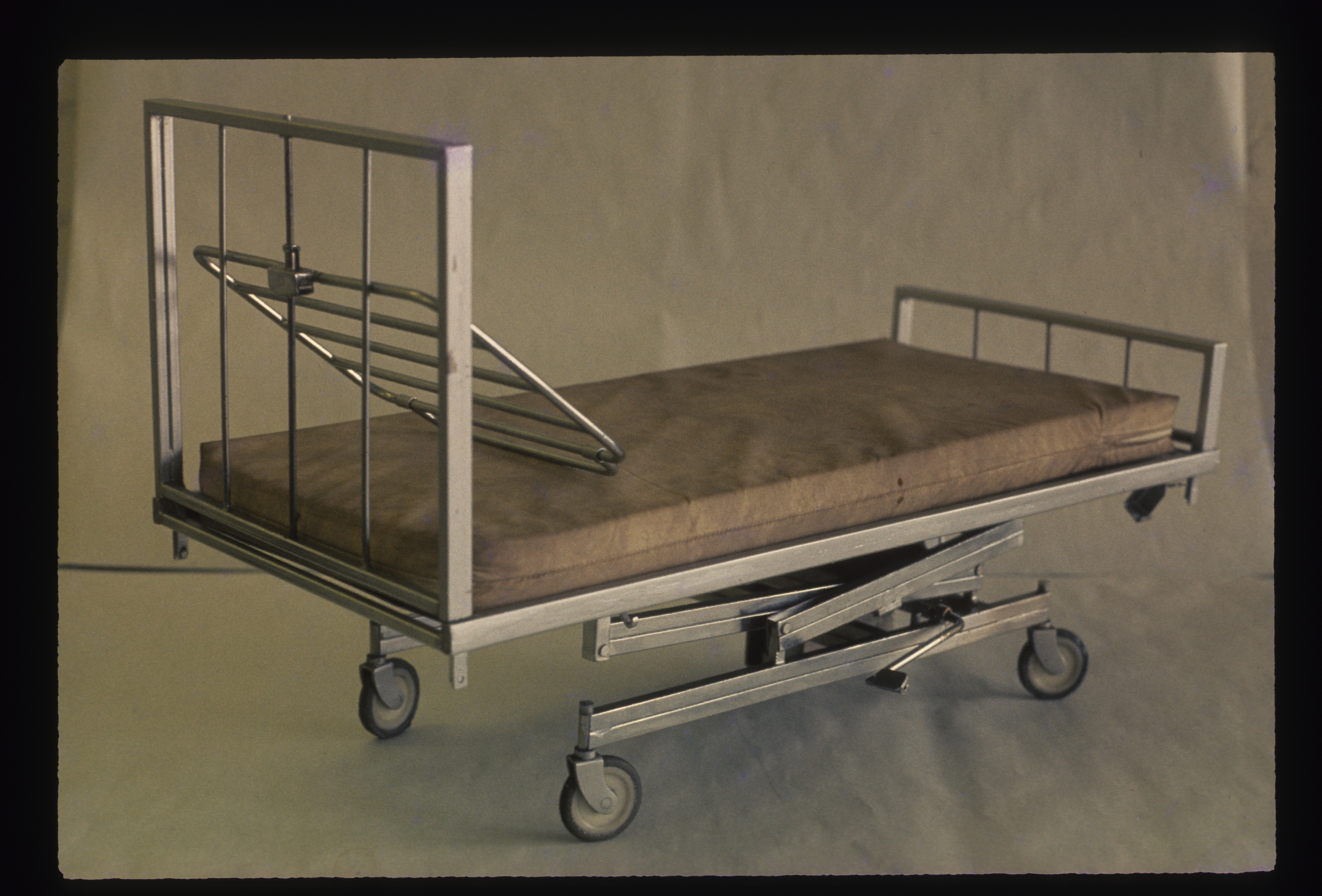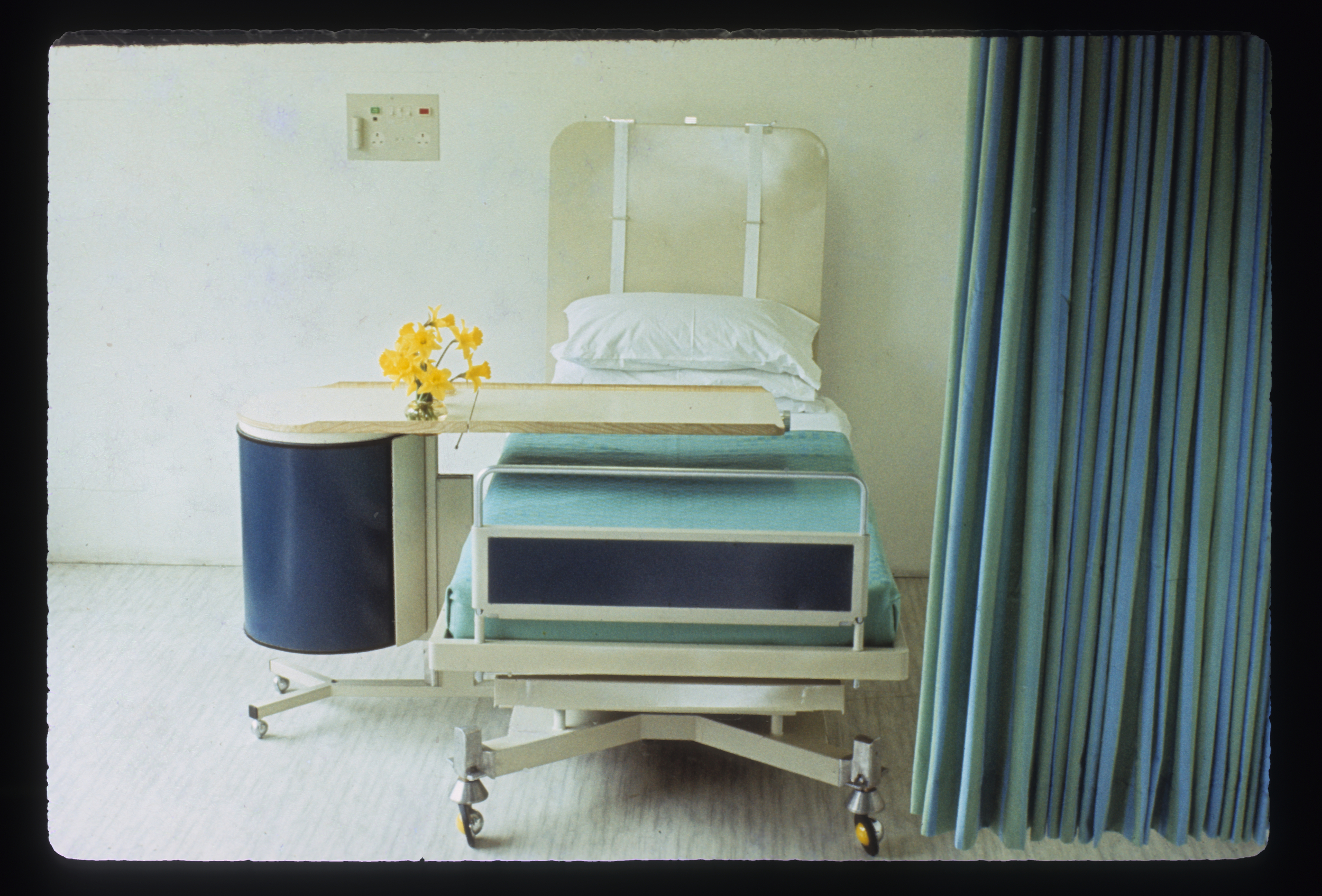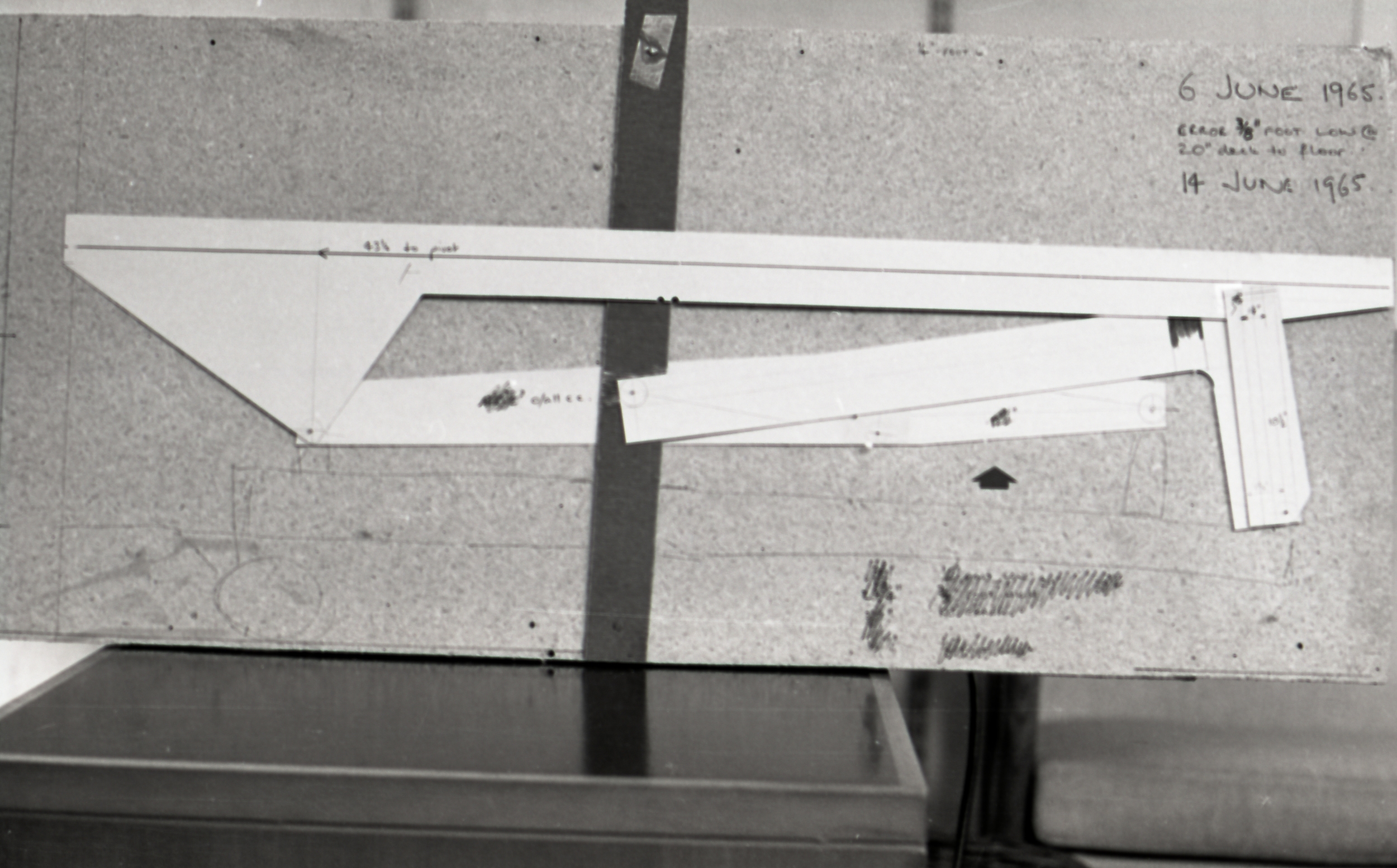The planned hospital beds needed to be high to minimise injury to nurses, but low for the patients to get in and out: the solution was an adjustable-height bed. However, straightforward resolutions like this were unusual. During the project, the team had to deal with intersecting issues of manufacturing, materials, healthcare, hands-on nursing, standards, safety, hospital management, patient satisfaction, industrial commerce, external relations, and institutional culture and politics at a number of levels.
The archives at the V&A and RCA contain extensive documentation of all aspects of the Kings Fund bed and related projects, much of it photographic.
The DDR's Most Famous Project
Misha Black had invited Bruce Archer to lead a research project on non-surgical hospital equipment funded by the Nuffield Foundation (Archer 2004). Archer saw the initial task as 'the development of an organised body of knowledge that will assist manufacturers to design and hospital planners to select fixed and moveable equipment' (p.1). Four problems were chosen as the focus of the 'organised body of knowledge', including the need for a standard design of hospital beds. There were over three hundred bed types in use, made in petty numbers by many companies. The Royal College of Nursing had reported the high incidence of permanent back injury among nurses due to the poor design of beds (p.2).
Lawrence (2001:47) remarks that the notes of Archer’s and his assistant Butter’s deliberations 'were couched in abstract terms and exhibited a preoccupation with methodology, with rigorous, often self-referential, definition and with stepwise progression.' Probably because the outputs of the 'organised body of knowledge' project appeared too theoretical and produced no prototype products, the first year’s report to Nuffield was rejected and the follow-on three years of funding were denied.
After the failure of Nuffield funding, Black found ways of keeping the rest of the team together, and recruited one of his star graduates, Kenneth Agnew. Each of the four hospital projects was addressed, including the hospital bed which 'turned out to be a very big exercise' (Archer 2004). In August 1962 Black approached the King's Fund in the hope that they would take over financing the project. As Lawrence explains, The King's Fund (founded in 1897 as the Prince of Wales Hospital Fund for London) had lost its original purpose with the coming of the National Health Service. They turned to such areas as hospital catering, equipment and, in particular, the training of hospital administrators and other non-medical staff (Lawrence 2001:53).
A double-page from Industrial Design and the Community (Baynes 1967).
Initially prevented by official policy from creating a single design, the team had to create a specification that manufacturers could respond to with their own solutions. Nevertheless, it was clear that the team would need to build real prototype beds and evaluate them against many criteria.
Baynes wrote that 'It is important finally to record that the Research Unit has itself produced a second design of bedstead to the revised specification and this is now being manufactured as a commercial proposition' (Baynes 1967:54). A caption in his chapter on the bed notes: 'The second bedstead shown here [66 above] is now in production by J Nesbit Evans & Co Ltd and has aroused a great deal of interest in Britain and abroad' (p.54). In the end, many King's Fund beds were made and many are thought to be still in use.
Ken Baynes was himself a key figure in the later life of the Department, leading the pioneering Design Education Unit from 1977.
A six-page article about the Hospital Bed by James Cousins appeared in Design magazine (Cousins 1965).
Archer, L. Bruce. 2004. ‘Autobiography of research at the Royal College of Art 1961-1986’, notes written for the Rector, Professor Sir Christopher Frayling, at his request in March 2004. L Bruce Archer Archive, Royal College of Art. Download the notes (PDF scan of typewritten document, 9 pages, 4.1 MB)
Baynes, Ken. 1967. Industrial Design & the Community. London: Lund Humphries.
Cousins, James. 1965. A general purpose bedstead for hospitals. Design 195, March 1965. 52-57. The article can be viewed online on the website of the Visual Arts and Data Service.
Lawrence, Ghislaine. 2001. Hospital beds by design: a socio-historical account of the 'King’s Fund Bed', 1960-1975. PhD thesis of the University of London. Available on the British Library Ethos service, ID: uk.bl.ethos.271734. Available online at Archive.org.

